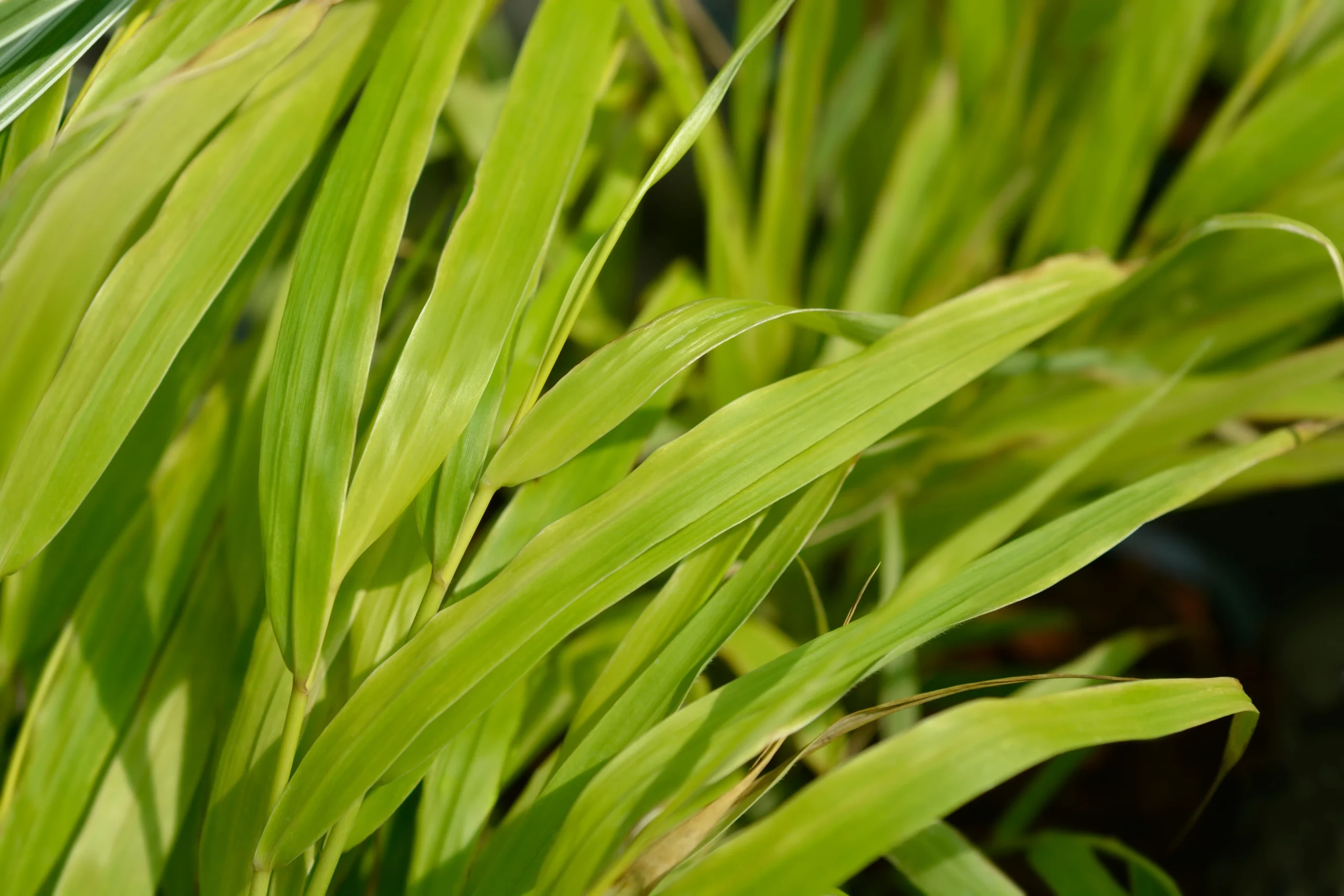Family: Hakone Grass
Type: Ornamental grass
Other Common Name: Hakone Grass

Japanese Forest Grass, or Hakonechloa macra, is a graceful and colorful ornamental grass. It’s known for its cascading habit and striking foliage that adds movement and texture to any garden.
This grass is particularly valued for its vibrant colors, which range from bright green to golden yellow and even variegated forms. The foliage often changes color throughout the seasons, offering year-round interest.
Hakone Grass is a shade-loving plant, thriving in areas where many other plants struggle. It’s perfect for adding life and color to shaded parts of the garden.
Hardiness Zone: 4b-9a
Pet Friendly: Yes
Moisture Preference: Moist
Sun Needs: Partial shade to shade
Growth Rate: Slow
Average Height (feet): 2
Average Spread (feet): 2
Average Life Span (years): 15
Form: Arching
Foliage Color: Green
Leaf Fall Color: Brown
Foliage Shape: Grassy
Landscaping Your Yard With Japanese Forest Grass
Incorporating Japanese Forest Grass into your landscape can create a sense of elegance and tranquility. Its flowing nature softens hard edges and adds a lush, full look.
This grass is ideal for border plantings, underplanting beneath trees, or along shaded walkways. Its texture and color variations can highlight these areas beautifully.
Use Hakone Grass in combination with other shade-loving plants. Its unique appearance complements ferns, hostas, and other woodland garden favorites.

In a woodland garden, Japanese Forest Grass mimics the forest floor with its natural, flowing appearance. It thrives under tree canopies and alongside other shade dwellers.
This grass is a staple in Japanese garden design. It embodies the aesthetic of wabi-sabi with its natural form and contributes to the serene and contemplative atmosphere of such gardens.
For contemporary gardens, Hakone Grass can add a soft, organic element. Its fine texture and movement bring a contrasting dimension to modern, structured garden designs.
Plant alongside paths and walkways. Its cascading habit creates a soft, flowing border that’s pleasant to walk beside.
Combine with water features. The movement of Hakone Grass complements the fluidity of water, enhancing the calming effect of garden ponds or streams.
Use as ground cover in shaded areas. It spreads slowly, forming a dense mat that can effectively suppress weeds while adding visual interest.
Select our pre-made garden layouts to create a landscape that’s uniquely yours. Simple, smart, and customizable!
In spring, new growth emerges, starting the transformation of the garden. The fresh, green leaves of Hakone Grass begin to unfurl and sway in the breeze.
During summer, the grass reaches its peak, displaying lush, vibrant foliage. Some varieties may change color, adding bright yellow or golden hues to the garden.
In fall, Japanese Forest Grass can turn to shades of copper and red, adding a warm tone to the autumn garden. Its texture remains appealing even as temperatures drop.
In winter, the grass may fade to tan or brown but often retains its form. Its presence adds interest to the winter garden, contrasting the bareness of other plants.
Japanese Forest Grass thrives in part to full shade. It is ideal for planting under trees, on the north side of buildings, or in any garden area that does not receive intense midday sun.
While it can tolerate some morning sun, this grass prefers shaded conditions. Too much direct sunlight can scorch its delicate leaves and diminish its vibrant colors.
It grows best in moist, well-draining soil rich in organic matter. Japanese Forest Grass can tolerate a range of soil types but prefers slightly acidic conditions.
Space plants about 18 to 24 inches apart. This allows each plant to spread and fill in the area, creating a lush, continuous ground cover.
The best time to plant Japanese Forest Grass is in the spring or early fall. Planting during these cooler seasons allows the grass to establish its root system.
Dig a hole as deep and twice as wide as the root ball. Place the plant in the hole, backfill with soil, water thoroughly, and apply a layer of mulch to conserve moisture.
Water regularly to keep the soil consistently moist, especially in the first growing season. Once established, Japanese Forest Grass is somewhat drought-tolerant but performs best with regular watering.
Fertilize in early spring with a balanced, slow-release fertilizer. Over-fertilizing can stimulate excessive growth at the expense of the plant’s form and color.
Pruning is not typically necessary. However, you can trim back the foliage in early spring to remove any winter-damaged leaves and encourage fresh growth.
In spring, clean up any winter debris, apply a light fertilizer, and ensure adequate watering as new growth emerges.
During summer, maintain consistent soil moisture. Japanese Forest Grass does not require extensive care during this season.
In fall, prepare the plant for winter by reducing watering. You can also add a layer of mulch for added winter protection.
Japanese Forest Grass is relatively low-maintenance in winter. In colder climates, the grass may die back but will re-emerge in spring.
Japanese Forest Grass spreads slowly and is not considered invasive. It gradually forms a dense, graceful ground cover.
Yes, Japanese Forest Grass is generally deer-resistant. It’s a good choice for gardens in areas with high deer populations.
Yes, it can be grown in containers, especially varieties with more compact growth habits. Ensure the container is well-draining and kept in a shaded location.
Sign up below to get exclusive deals, discounts, and new plant collections—delivered straight to your inbox! Plus, stay inspired with the latest gardening tips, landscaping trends, and DIY garden ideas. Start growing with us today!
A big thank you for subscribing to the PBN Design newsletter.
We're thrilled to have you join our community. Get ready for exciting updates, insightful content, and more delivered straight to your inbox.
Stay tuned!
Go backA big thank you for subscribing to the PBN Design newsletter.
We're thrilled to have you join our community. Get ready for exciting updates, insightful content, and more delivered straight to your inbox.
Stay tuned!
Go back